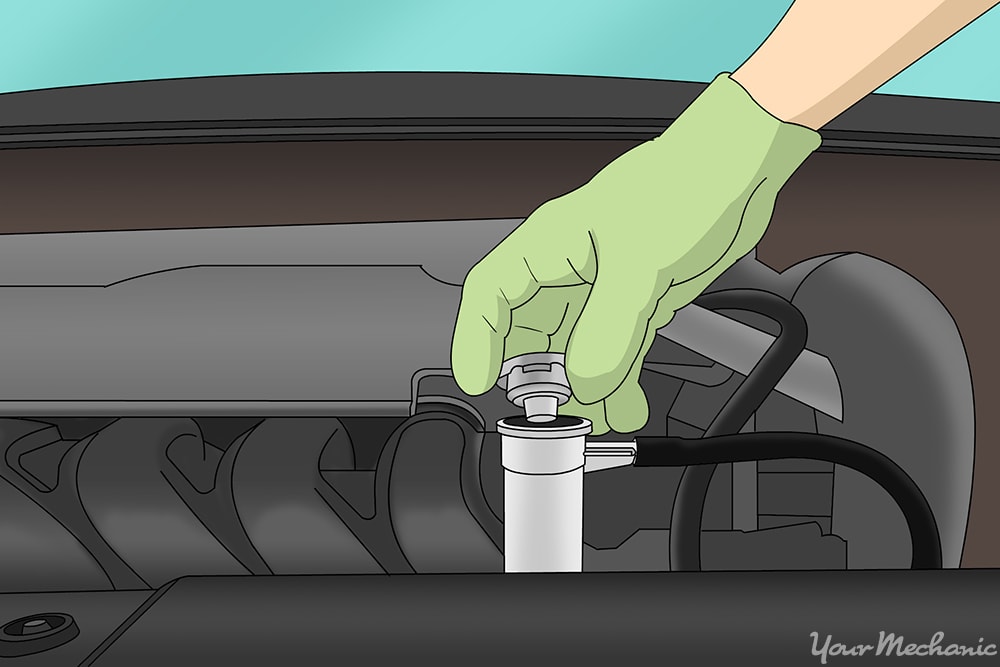

As the coolant in your cooling system increases in temperature, the pressure in the system increases as well. Normal operating temperature of a cooling system is around 220 degrees Fahrenheit and the boiling point of water is 212 degrees Fahrenheit.
By increasing the pressure in the cooling system, the boiling point of the coolant is increased to 245 degrees Fahrenheit at 8 PSI. Cooling system pressures are controlled by the radiator cap. Radiator caps hold pressures between 6-16 PSI for most automotive systems.
Most cooling system pressure test kits come complete with everything you will need to pressure test most vehicles. This includes testing radiator caps as well. In order to pressure test the cooling systems of multiple makes and models of cars, adapters are required for each manufacturer.
Part 1 of 1: Pressure testing the radiator cap
Material Needed
Step 1: Make sure the cooling system is not hot. Carefully touch a radiator hose to see if it is hot.
- Warning: Extreme pressure and heat are at play. Do not attempt to remove the radiator cap while the motor is hot.
Step 2: Remove the radiator cap. Once the motor has cooled down enough to touch a radiator hose without it burning you, you can now remove the radiator cap.
Warning: There could still be hot pressurized coolant in the system so be sure to pay attention and be careful.
Tip: Place a catch pan under the radiator to catch any coolant that may come out when you remove the radiator cap.
Step 3: Attach the radiator cap to the pressure tester adapter. The cap will fit onto the pressure tester adapter in the same way it twists onto the radiator neck.
Step 4: Attach the adapter with the installed cap onto the pressure tester.
Step 5: Pump the pressure tester handle until the pressure builds to the specification written on the radiator cap. It should not rapidly lose pressure, but it is normal to lose a little.
- Tip: The radiator cap should be able to hold most of the max pressure for up to five minutes. You don’t need to wait five minutes, though. A slow loss is normal but a rapid loss is a problem. This takes a little bit of judgment on your part.
Step 6: Install the old cap. Do this if it is still good.
Step 7: Buy a new radiator cap from the auto parts store. Make sure you know the year, make, model, and engine size before you head to the parts store.
It is often helpful to bring the old radiator cap with you.
- Tip: It is a good practice to bring the old parts with you to buy the new parts. By bringing the old parts, you can be sure you are leaving with the correct parts. Many parts also require a core or an extra charge will be added to the price of the part.
Radiator caps are an essential part of the cooling system that many discount, keeping the cooling system in balance. If you would like one of YourMechanic’s professional technicians to pressure test your radiator cap for you, book an appointment today and one of our mobile mechanics will test it for you at your home or office.






